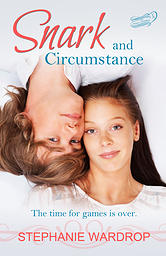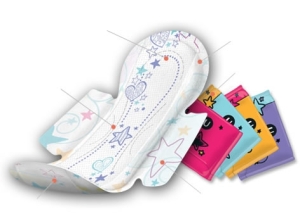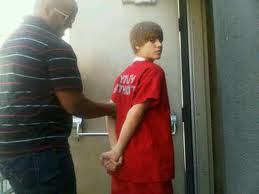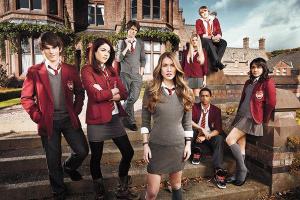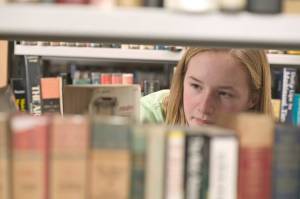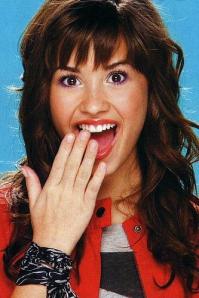This week’s trending topic in YA lit responds to Meghan Cox Gurdon’s “Darkness Too Visble”, an article in the Wall Street Journal that questions why it is “considered a good idea” that “contemporary fiction for teens is rife with explicit abuse, violence and depravity.” And while I may not add anything new to the discussion, as a writer, academic, and mom I feel I have to weigh in.
Gurdon begins her essay with the story of Amy Freeman, who left the store empty-handed when she was confronted by shelf after shelf of “lurid and dramatic covers” at her local Barnes and Noble. “`It was all vampires and suicide and self-mutilation, this dark, dark stuff'” she is quoted as saying, and Gurdon warns her readers that while we may foolishly think the YA we read as teens was dark, we were coddled by the literary equivalent of warm milk and a baby blanket compared to what’s out there today. (And before I will get into the argument for and against this position, I would just like to say that if Ms. Freeman and others are wondering why so many dark books are featured at Barnes and Noble,here’s the answer: that’s what Barnes and Noble buys. And as I have explained in previous posts, there is not a simple correlation between what B&N buys and what the public wants, so we can’t just say these books are in the stores and in publishing queues because that’s all the public will read).
I first reacted to this article by thinking Gurdon reminded me a lot of Marge Simpson, who advised her thoughtful, troubled daughter Lisa to smile even if she were feeling sad, because that’s how everyone can tell what a good mother you have. Marge may not be the most enlightened parent, but like most of us, she wants what’s best for her children, and she thinks protecting them from the dark realities of the world as long as possible is a good step in that direction. No doubt Gurdon and Freeman feel the same, and who can blame them? We can respond to the ugliness of the world, a world in which “kidnapping and pederasty and incest and brutal beatings” occur just as in YA lit, by either pretending it does not exist and shielding our children from this grim reality. Or we can acknowledge it and try to change it even as we equip our kids to deal with it. 
But Gurdon is not simply concerned about reality and protection; she makes a much more disturbing argument, I think, when she declares that reading such dark material “has to do with a child’s happiness, moral development, and tenderness of heart” and that what’s at stake here is “entertainment” that “does not merely gratify taste . . . but creates it.” The “calculus”, as she puts it, seems to work like this: A teen reads about vampires and violence and doesn’t necessarily want to run right out and be a vampire or commit mayhem, but s/he does develop a taste for books about vampirism and mayhem. And any time you start arguing about — or worse, dictating — taste, you get into a dangerous area, rife with prejudice and elitism, certainly, at the very least, with subjectivity.
She attempts to historicize the YA genre, saying it was invented in 1967 by S.E. Hinton and grew in the late 1960s and 1970s, “mirroring the tumultuous times.” I remember spending much of those tumultuous times in the children’s section of the Reading Public Library, where I witnessed a grey-haired, dainty librarian, who always sort of scared me, practically grab a book from a young adolescent’s hand and forbid her to read it, raging that it was “too bold”. (The book was called Leo the Lioness. I still remember the title and cover because I was intrigued, but too cowed to read it, I guess). It was hard in those days to bridge the gap between children’s books and adult ones. I thank God for Richard Peck and Judy Blume who showed me a world I could relate to, as opposed to the worlds presented by writers like Alexander Dumas, whose The Count of Monte Cristo we were assigned in 8th grade. I think I am the only one in the class who actually read it and if anyone out there from the Exeter Twp. Senior High School Class of 1983 wants to set me straight on that score, I’d appreciate it, because when I found out no one else read it I felt like the biggest dork. And feeling like a dork was a big thing back then. I’m not saying that Dumas has nothing to say. Of course he does. But he didn’t help me with the issues I dealt with everyday the way Blume and Peck did. Reading about what kids did in those books did not make me want to run right out and do what they did. Are You There God, It’s Me Margaret made me wonder why so many girls were dying to get their periods, but helped me understand that some saw this as a major marker in their lives, and another whose title escapes me helped me understand why sometimes boys would awkwardly carry their books in front of their crotches. Go Ask Alice, which Gurdon cites, certainly did not make me want to run off to San Francisco and take drugs and be raped by a jewelry shop owner’s creepy boyfriend. In fact, it showed me that if you do drugs or get drunk, you get incapacitated and bad things can happen to you. It also cured me of some of my generation’s romanticization of hippie culture.  These were entertaining reads and they taught me valuable lessons. And when I read about troubled adolescents, in books like I Never Promised You a Rose Garden, I saw a spectrum of mental illness that put my own depression in perspective. To read about a girl who suffered from some of the same emotional issues as me did NOT make want to follow suit. It did not “normalize pathology”, as Gurdon warns.
These were entertaining reads and they taught me valuable lessons. And when I read about troubled adolescents, in books like I Never Promised You a Rose Garden, I saw a spectrum of mental illness that put my own depression in perspective. To read about a girl who suffered from some of the same emotional issues as me did NOT make want to follow suit. It did not “normalize pathology”, as Gurdon warns.
And this is where her argument gets ugly for me. She looks back on Judy Blume’s young lovers in Forever as “losing their virginity in scenes of earnest practicality”, so teen sex in and of itself is not pathological or vulgar to her. 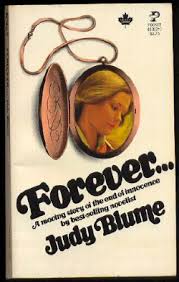 But Lauren Myracle*, whom Gurdon scathingly notes was hailed by Publisher’s Weekly as “`this generation’s Judy Blume'” is “grotesque” for telling a story of meth use, the savage almost-murder of a gay young man, sexual assault, and “`bag hags'”, “heterosexuals who engage in gay sex for drugs.” While acknowledging that Myracle’s work is “not unusually profane”, Gurdon laments that any adult objecting to depictions such as these will be shunned; “let a gatekeeper object to a book and the industry pulls up its petticoats and shrieks `censorship’!” she wails.
But Lauren Myracle*, whom Gurdon scathingly notes was hailed by Publisher’s Weekly as “`this generation’s Judy Blume'” is “grotesque” for telling a story of meth use, the savage almost-murder of a gay young man, sexual assault, and “`bag hags'”, “heterosexuals who engage in gay sex for drugs.” While acknowledging that Myracle’s work is “not unusually profane”, Gurdon laments that any adult objecting to depictions such as these will be shunned; “let a gatekeeper object to a book and the industry pulls up its petticoats and shrieks `censorship’!” she wails.
Do the characters and practices in Myracle’s book have real-life counterparts? Yes. Should all kids be reading about it? That depends on their age and maturity level — and that is exactly what makes the issue of monitoring YA books so complicated, because it is up to individuals, parents and readers, to decide what is acceptable. And if we decide that kids should not read about rape, or violence, or murder, or drug addiction, or cutting, or anything else that’s unseemly because we believe these are not the real problems of most “real” kids, that is somewhat erroneous and certainly places those kids who do deal with these issues in the category of being not real, or not worth acknowledging as such.
Myracle’s series of books in textspeak (TYTL, TTFN, and L8R G8R ) have earned a lot of flak from angry parents, one of whom referred to her as “Satan”. They are ingenious in their use of texting as both a frame and a language for the story and present real characters engaged in real discussions about the things that are of real importance to them. When I read the first one, I’ll admit to being a little shocked by the reference to female ejaculation in the first pages. Will I recommend it to my eleven-year-old? No. But she loves the Love Ya Bunches and Twelve series. And if she reads TTYL and gets to that part in a few years, I hope she’ll ask me about it, much as I cringe at the thought of having to explain it. Because as so many people have said so many times before, it’s not like these kids aren’t getting sex and depravity and profanity everywhere else. Gurdon is right to note that the language in media and YA novels has taken a turn toward the profane. But if such language is disturbing to adults, I don’t think it is to kids. And maybe that’s a good thing. Maybe it’s okay that so-called “bad words” have lost their shock value. Kids know not to use them in most social situations. But they also know an F-bomb is not destructive if no one notices or cares that it’s been dropped.
As everyone knows, we live in a media-drenched world. Right now any kid flipping through the cable channels will see discussions about Congressman Weiner’s weiner and whether he texted a photo of it (encased in tighty whities) to a girl with a Twitter account. They’ll see communities devastated by tornadoes and talk shows in which people loudly reveal the sorts of things no one would have admitted in private let alone shouted from a public forum. Is it right, is it good, is it healthy? Probably not. But I would argue that YA writers deal with these issues in much more sophisticated and sensitive forms. They provide a space where a younger reader can examine these issues vicariously, and maybe find a way to deal with it in the real world, as so many readers of Laurie Halse Anderson’s books like Speak and Wintergirls can attest.
This is why I think Suzanne Collins’ “hyper-violent, best-selling Hunger Games trilogy” is wonderful, and maybe even necessary. It’s a dystopian look at a world that is not that far removed from ours. It’s a response to reality tv and a growing class divide, one couched in a page-turner of a story that might make readers question how far removed shows like Fear Factor and Survivor are from televising human hunting parties in which only one teen can survive. Or how far-fetched it would be to imagine a world in which the few rich people in the nation see everyone else as their minions to toy with until they cease to entertain. We watch Charlie Sheen rant about being a warlock and find that entertaining without once thinking, “Someone should get that guy to a hospital.” We watch women compete for the privilege of receiving televised liposuction and nose jobs so they will be worthy of marrying someone. Now, that’s dark.
In a tweet response to the WSJ, Libba Bray says it all so much better than I do:
Books are, at their heart, dangerous. Yes, dangerous.
Because they challenge us: our prejudices, our blind spots.
They open us to new ideas, new ways of seeing. They make
us hurt in all the right ways. They can push down the
barricades of “them” & widen the circle of “us”. And when
one feels alone–say, because of a terrible burden of a
secret, something that creates pain and isolation, books
can heal, connect. That’s what good books do. That’s what
hard books do. And we need them in the world.”

-
maybe it all started here.
For a good timeline of “edgy” teen books, check out the site for the Cooperative Children’s Book Center, The School of Education, University of Wisconsin-Madison
* Full disclosure: I had the pleasure of teaching with Lauren Myracle at Colorado State University and she is a lovely person. There is nothing satanic about her at all.
 One indie YA worth checking out is IRENE ROSE’S CHARCOAL AND HOT CHOCOLATE
One indie YA worth checking out is IRENE ROSE’S CHARCOAL AND HOT CHOCOLATE 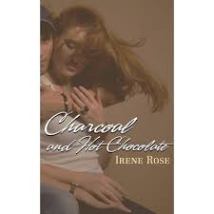 because it features the awesome couple you are about to meet below. But first, a little about the book itself:
because it features the awesome couple you are about to meet below. But first, a little about the book itself: 